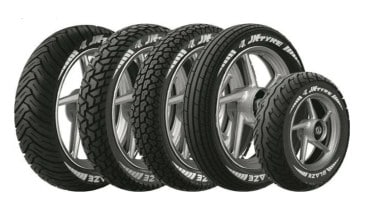JK Tyre & Industries, one of the leading tyre manufacturers in the country is upbeat about the long-term growth prospects of the automotive industry in India. For Q2 FY2024, the company reported revenue of Rs 3,905 crore, up 4% YoY, EBITDA at Rs 597 crore, as against RS 305 crore a year ago. The net profit came at Rs 249 crore.
Dr. Raghupati Singhania, Chairman and Managing Director (CMD), JK Tyre & Industries said, “The sustained thrust on larger market presence enabled boost volumes across segments and product categories. The strategic focus on the enrichment of product mix across the entire radial range, PCR/LTR/TBR has had positive outcomes. Cost compression and the ongoing efforts to enhance internal efficiencies remain the bedrock of our operations”.
In fact, the company is quite upbeat about the future and has already proposed an additional investment of around Rs 1,025 crore towards adding an additional 19.45 percent capacity by October 2025. This it says on the fact that it is currently operating at about 95 percent capacity utilisation, on the back of demand across the product portfolio.
In an interaction with Financial Express Online, Anuj Kathuria, CEO, JK Tyre & Industries attributed the optimism on the fact that the company has witnessed robust demand across the product range.
“If I take the passenger car radial segment, that is where the higher rim sizes and the premium products, the percentage contribution of such products in the overall pie has become much larger. In addition, we have kept on enhancing the JK Steel Wheels brand shop which is definitely providing a larger share to our overall sales that is helping us get a premium as compared to the normal channel.”
When queried if it was worried about the possibility of a slowdown? Kathuria states that manufacturing expansion is a long-term strategy, and if one looks at the market dynamics it is extremely positive.
“All OEMs in the passenger vehicle segment are setting up fresh capacities be it greenfield or brownfield projects. Even if there is some impact in the short-to-medium term, the long-term view is optimistic. The GDP for the next 5 years is looking robust, the income levels are set to go up, low per capita penetration of cars in India. And even if we look at the average usage of personal vehicles it has gone up. The replacement demand is coming down from the average 3-4 years to 2-2.5 years,” he reveals.
On the other hand, he says that the automotive industry has already seen the worst of impacts – GST, Axle load norms, BS6 transition, and Covid. Now most factors look positive.
“From then whatever was excess capacity has been absorbed. With improved freight availability we see a steady shift towards higher tonnage with CVs coming with more tyres. We expect that the demand will go up both in OE and aftermarket.”
In fact, he says that contrary to popular belief about the impact of raw material on tyre segment. The industry is not a direct consumer of crude products, but its by-products. This means that any efficiency improvement at its suppliers also adds to further adds to its operation efficiency.
/
